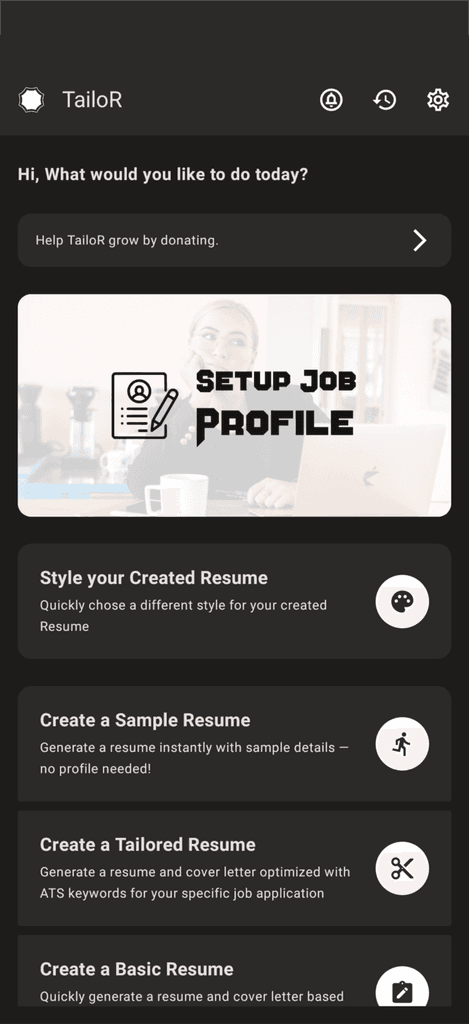In today’s competitive job market, sending out the same resume to multiple employers won’t cut it. Each job opening has unique requirements, and hiring managers are looking for candidates who meet their specific needs. This is where tailoring your resume for each job application becomes crucial. By customizing your resume, you can highlight the most relevant skills and experiences that align with the role, increasing your chances of standing out from the crowd and getting that coveted interview.
Here’s a step-by-step guide on how to tailor your resume effectively for each job application:
1. Analyze the Job Description
The first step to tailoring your resume is to carefully review the job description. Look for keywords, skills, and qualifications that the employer values. Pay close attention to:
Responsibilities: What will the job require day-to-day? Match your experience with these duties.
Required skills: These are non-negotiable skills you must have to be considered.
Preferred qualifications: While not mandatory, these give you an edge if you possess them.
For example, if a job posting emphasizes "project management" and "communication skills," make sure these appear prominently in your resume under your skills or experience sections.
2. Customize Your Professional Summary
Your professional summary (or objective) is the first thing a hiring manager sees, so it’s essential to make it job-specific. Instead of a generic statement like, “Experienced professional seeking new opportunities,” use something more aligned with the job at hand. For example:
“Detail-oriented project manager with 5+ years of experience in coordinating cross-functional teams and driving successful project completion, seeking to contribute to [Company Name]'s innovative project management team.”
This shows that you’ve taken the time to align your qualifications with the job’s requirements.
3. Highlight Relevant Experience
Each job listing will emphasize certain responsibilities that are key to the role. In your resume, focus on the experiences that match these responsibilities, even if your previous jobs involved other duties as well.
For example, if you’re applying for a marketing position that emphasizes social media strategy, make sure your work experience highlights relevant accomplishments like:
“Led social media campaigns that increased brand engagement by 40% across Facebook and Instagram.”
If you have experiences that aren’t directly relevant to the job, you can minimize their detail or omit them altogether. The goal is to prioritize what matches the job description.
4. Use Job-Specific Keywords
Many companies use Applicant Tracking Systems (ATS) to scan resumes before a human even sees them. These systems search for specific keywords that match the job description. To ensure your resume passes the ATS filter, use the same language and terms found in the job posting.
For example, if the job description mentions “budget management” or “data analysis,” incorporate these exact terms into your resume, such as:
“Managed budgets of up to $500,000 across multiple departments.”
This increases the likelihood of your resume making it through the ATS and onto a hiring manager’s desk.
5. Update Your Skills Section
Different jobs emphasize different skill sets, so it’s important to update your skills section for each application. If you’re applying for a tech role, emphasize technical proficiencies like programming languages or software tools. For a management position, highlight leadership and team collaboration skills.
Make sure the skills you list match those mentioned in the job description. This shows that you have the expertise required and reinforces your qualifications.
6. Emphasize Measurable Achievements
Instead of just listing responsibilities, focus on your accomplishments and quantify them whenever possible. Employers want to know not just what you did, but how your work made an impact.
For example, instead of saying “Responsible for sales,” try:
“Increased sales by 25% within the first year by implementing a new CRM strategy.”
Numbers and measurable outcomes demonstrate your value and provide concrete examples of your success, making your resume more compelling to recruiters.
7. Format for Readability and ATS
In addition to customizing the content, make sure your resume is easy to read for both humans and ATS. Stick to a clean, simple layout—avoid using images, graphics, or unconventional fonts that can confuse ATS software. Use standard headings like “Work Experience,” “Skills,” and “Education” to organize your content clearly.
Final Thoughts
Customizing your resume for every job application may seem time-consuming, but it significantly improves your chances of landing an interview. By aligning your skills, experiences, and achievements with the specific requirements of each job, you can show employers that you’re the perfect fit for their role.
With TailoR, you can make this process even easier. TailoR’s ATS-tailored resume feature helps you analyze job descriptions and create customized resumes in minutes. So, whether you’re applying to one or dozens of jobs, you can submit with confidence, knowing your resume will stand out. Happy job hunting!


